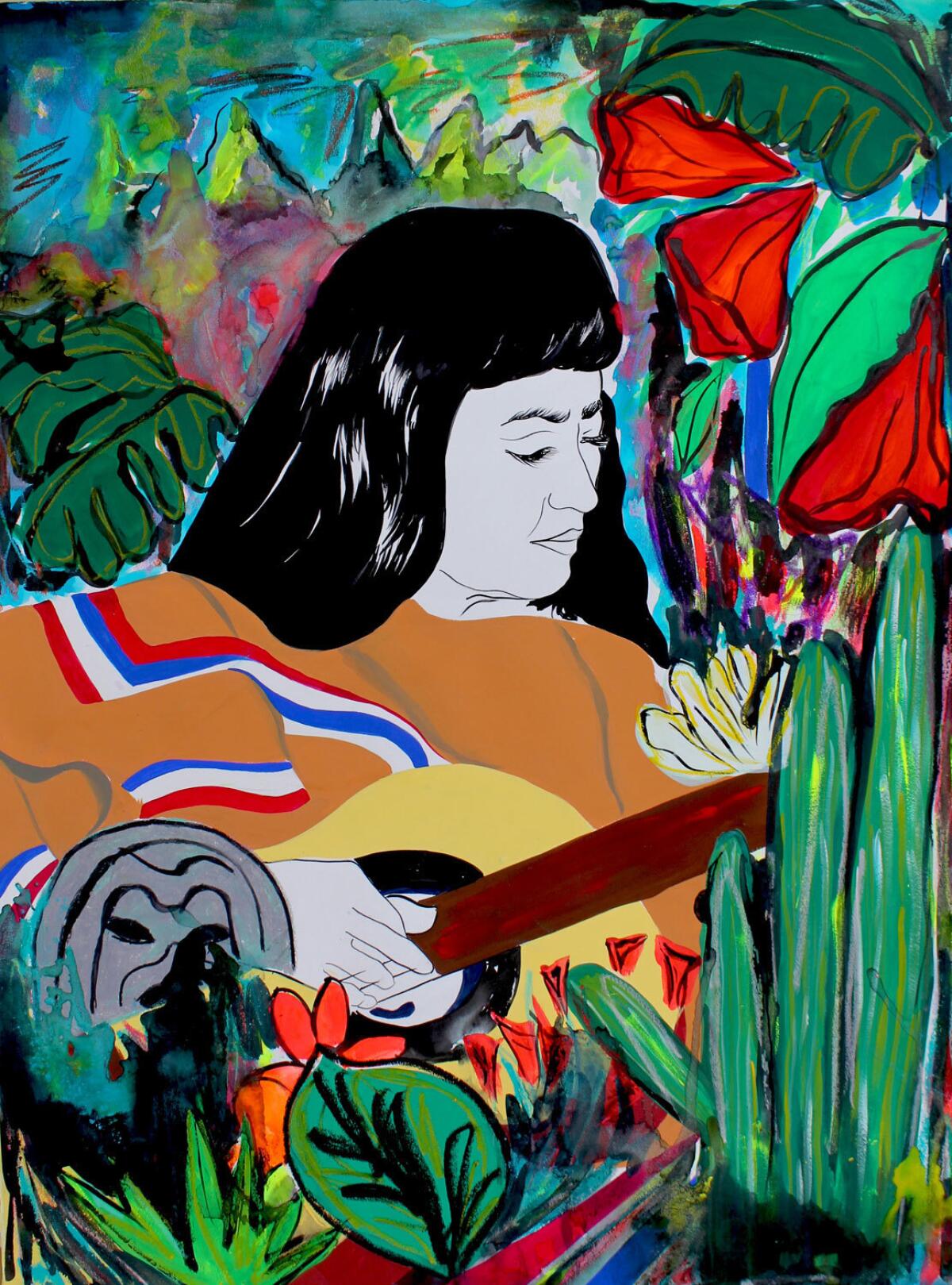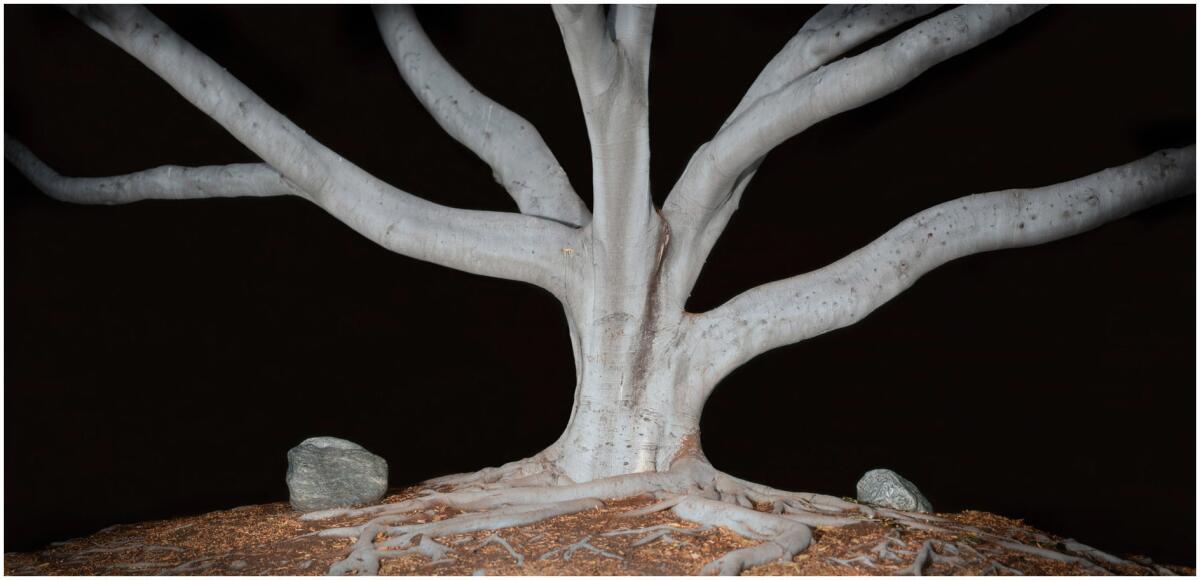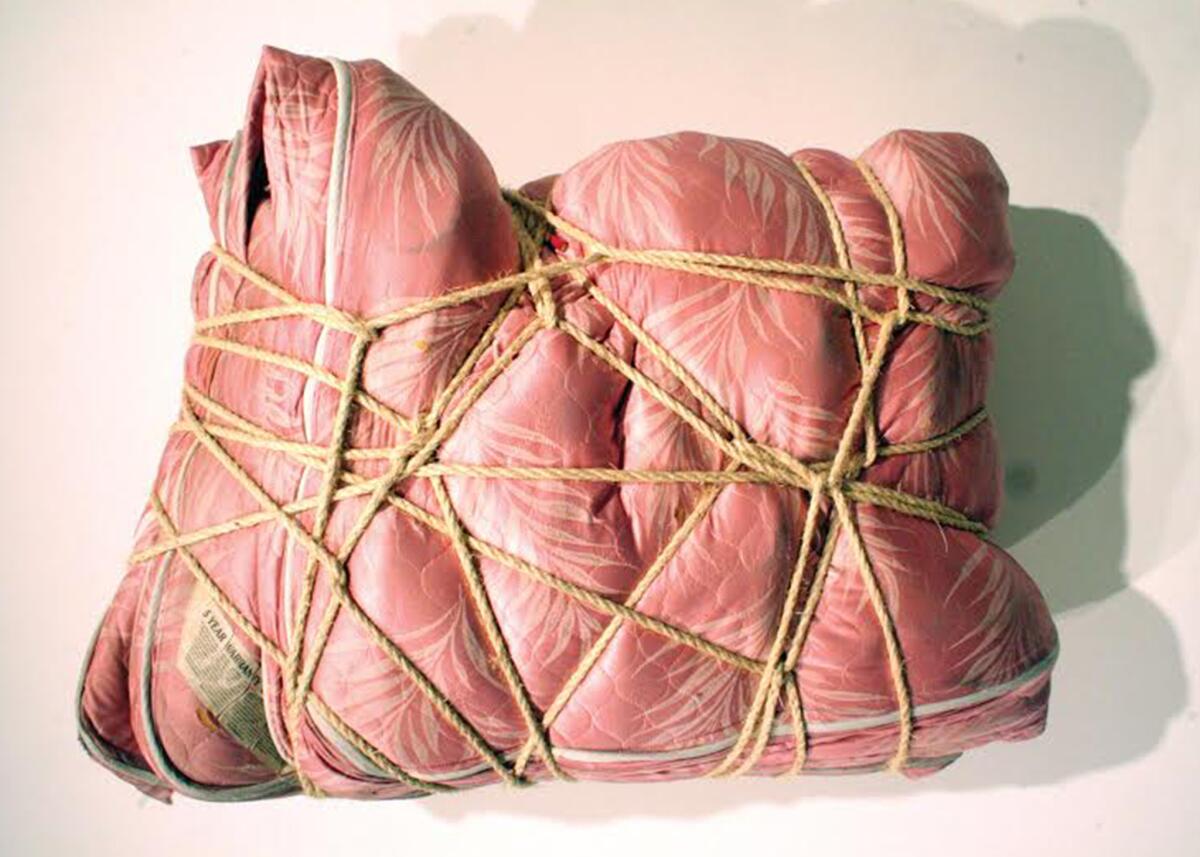‘The Art of Protest’ at Church of the Epiphany: Eastside landmark is a sanctuary for social justice
- Share via
The Church of the Epiphany in Lincoln Heights was the Los Angeles home base for Cesar Chavez and the United Farm Workers movement. The newspaper for the Chicano civil rights movement, La Raza, was printed in the basement. Since the 1960s, the Episcopalian church has served as a sanctuary for Chicano social justice movements, and a gathering place for those involved in them, regardless of religious affiliation.
That legacy continues today and is on display through March 29 in “The Art of Protest: Epiphany and the Culture of Empowerment,” an exhibit that features the work of more than 60 artists, including those who organized at the church decades ago as well as contemporary artists.
The exhibit is co-curated by Ravi GuneWardena, an architect involved in the preservation of the historic church; Sofia Gutierrez, a Los Angeles County Museum of Art educator; Ricardo Reyes, artist and 1960s Chicano activist; and Roslio Munoz, historian and co-chair of the Chicano Moratorium, which focused its activism around the Vietnam War.
Notable pieces include photojournalist Tish Lampert’s pictures of the three-minute “Door of Hope” reunions of families separated on opposite sides of the border; sculptural pieces by Camilo Ontiveros created from the worldly possessions of deported immigrants; a paper-collage mosaic by Mita Cuaron depicting the 1968 Chicano student walkouts; and paintings by members of the 1970s Chicano artist collective Los Four.
The art fills the church. It floats above pews and hangs by the altar. At first, congregants and clergy were apprehensive about this total takeover, but once they saw it being installed, they were extremely moved by it, by “how beautiful and powerful it is to have all these voices inside the church,” GuneWardena said.
The impetus for the show came out of discussions involving building preservation. The church, founded in 1887, was declared an L.A. Historic-Cultural Monument in 2005.
“Part of the work was to research why the building was important,” said GuneWardena. “And we realized that what happened at the church was as important — or more important — than the structures themselves.”




The biggest entertainment stories
Get our big stories about Hollywood, film, television, music, arts, culture and more right in your inbox as soon as they publish.
You may occasionally receive promotional content from the Los Angeles Times.








